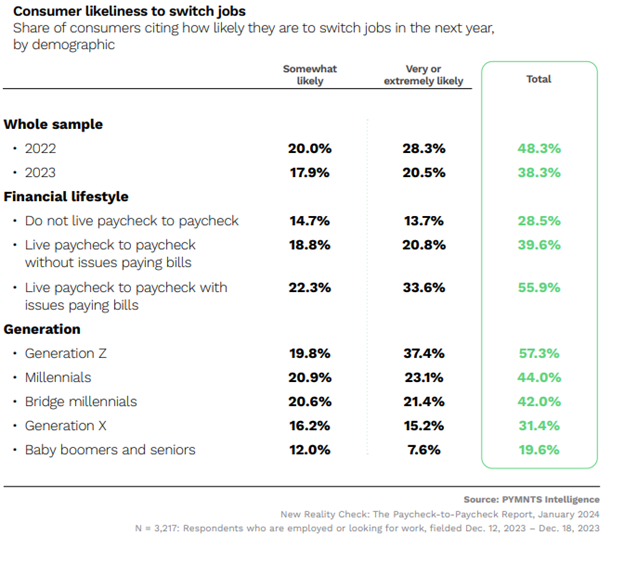Uptick in Inflation Impacts Nearly Every Consumer Despite Age, Earnings

News this week that inflation inched up slightly in February is bad news for U.S. consumers, but if there’s any consolation, most say they saw it coming.
When PYMNTS Intelligence surveyed nearly 4,400 U.S. consumers for “New Reality Check: The Paycheck-to-Paycheck Report: Why One-Third of High Earners Live Paycheck to Paycheck,” 82% of respondents say concerns about inflation top their lists of economic woes, and only 17% hold out any hope that inflation will subside anytime soon.
One of the few counterpunches available to consumers hoping to fight back against inflation is an increase in their paycheck. However, as the report found, less than 4 in 10 consumers anticipate a wage increase this year, down from 43% who expected a raise in 2023.
That leaves finding a new job — presumably one offering better pay — as another method of countering inflation.
However, PYMNTS Intelligence also found the share of consumers who think they can secure a new job that meets their salary needs is down from 50% in 2023 to 43% now.
Additionally, 34% of workers believe job hunting this year will be more difficult than it was last year. Just 20% of workers say they are very or extremely likely to switch jobs in 2024, while Gen Z workers have the highest hopes of all when it comes to landing a new role, with 38% that say they are likely to switch.
This suggests wage earners who are established in their careers anticipate lower likelihoods of earning more by changing jobs. Gen Z workers, meanwhile, are more likely to work in the leisure and hospitality fields, where wages are on the rise, so it’s understandable they may see a pathway to better pay.

In other words, Gen Z workers — who are more likely to be in the early stages of a career and more comfortable switching things up to increase their earnings — are the exception, not the rule. As the above table illustrates, the average wage earner, across most age groups, is more likely to believe the prospects for a new job are slim.
One way to sidestep the frustration that comes from being unable to land financially rewarding, full-time work is to take a second part-time job. And for an increasing number of Americans, that option has become reality.
Last year, in compiling the latest edition of our Consumer Inflation Sentiment Report, 45% of Millennials Say Wages Don’t Meet Inflation, we found that 41% of already-working consumers had to pick up a side hustle to make ends meet. In fact, half of Generation Z respondents (and slightly more than half of millennials) said they were seeking additional employment when surveyed.
Generation Z and millennials accounted for the lion’s share of those looking for additional work, and while it might be understandable younger workers may need a second gig to pay their bills, they were not alone. Almost half of bridge millennials took on a second part-time job. So did 19% of baby boomers and seniors and nearly 33% of Gen X workers.
The report also found higher incomes do not exclude financially stressed consumers from seeking a second job. While 40% of those earning less than $50,000 annually picked up additional work, nearly 44% of those earning more than $100,000 did the same. In other words, no one appears to be immune from the effects of rising inflation.

